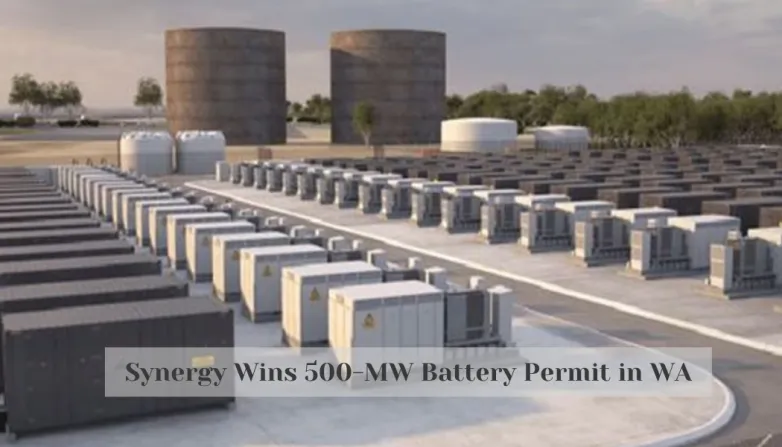Synergy Wins 500-MW Battery Permit in WA
- Synergy's AUD-1.6-billion 500-MW/2,000-MWh CBESS will be one of Western Australia's largest battery projects, alongside France's Neoen SA's 219-MW/877-MWh Collie battery. The state's shift to renewables has begun!

Synergy, a state-owned energy retail company in Western Australia, has been granted a permit to construct a 500-MW/2,000 MWh battery energy storage system (CBESS). The AUD-1.6-billion project will be installed in two 250-MW/1,000 MWh phases, with 650 battery units from China’s Contemporary Amperex Technology Co Ltd (CATL) and 160 inverters. The battery is expected to become operational in October 2025 and is Synergy’s third grid-scale battery in Western Australia, after the Big Battery and Kwinana Battery south of Perth. Additionally, France’s Neoen SA is building a 219-MW/877-MWh battery in Collie, with a potential capacity of 1,000-MW/4,000 MWh. The CBESS is part of the state of Western Australia’s plan to transition away from fossil fuels to renewables generation.
What Impact Will Synergy's 500-MW/2,000 MWh Battery Have?
- The 500-MW/2,000 MWh battery energy storage system (CBESS) will be the first battery to be built in the Pilbara region in Western Australia, in order to help the region transition away from fossil fuels to renewables generation.
- The battery is expected to provide an additional 500 megawatts of power during peak times and help stabilize the grid during periods of volatile or low renewables generation.
- The massive battery system will help improve energy reliability in Western Australia, by providing a secure reserve of energy and helping to balance the grid in times of high demand.
- The CBESS could help to reduce electricity costs for consumers, by allowing for more efficient use of existing electricity networks.
- The CBESS will also play a role in reducing greenhouse gas emissions, by providing clean, renewable energy to the grid.
- The battery will also help to reduce the risk of blackouts and other outages, by providing backup power during times of low renewable generation.
- In addition, the CBESS could also help to increase the efficiency of the grid, by allowing for more efficient transmission and distribution of electricity.
Also read
- Soltage raises $80m debt to expand U.S. solar and storage pipeline
- Voltalia prepares site for 43-MW solar-storage hybrid in French Guiana
- Poland funds eight energy clusters, thousands of rooftop solar installs
- Vena Seals Financing for 300-MW Opus Solar
- China’s fossil generation dips as solar output surges in November

